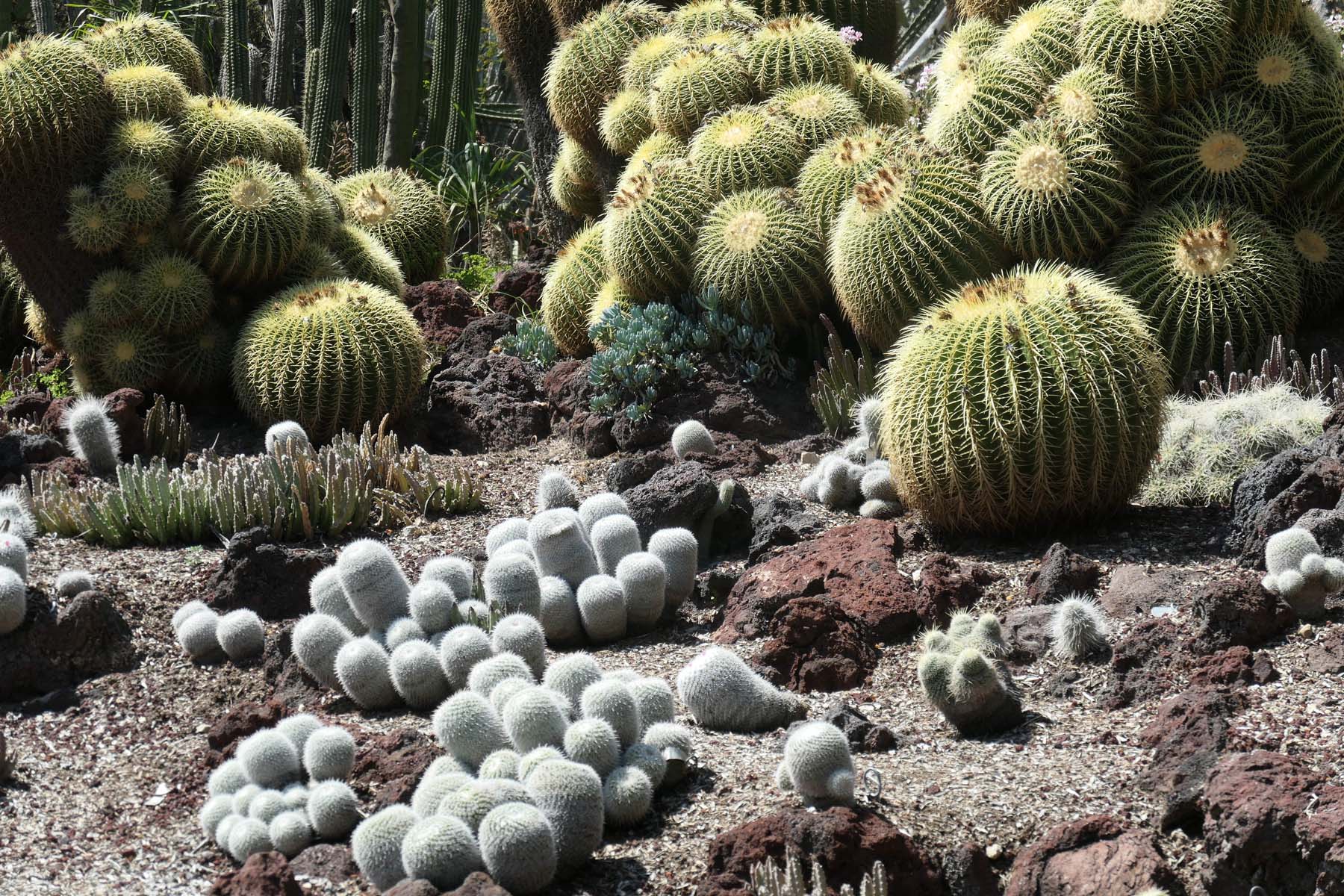Any fan of succulents and cacti will have a field day when visiting Pasadena’s Huntington Gardens. Or they might just walk through the many neighborhoods of L.A., where landscaping with those plants, uniquely able to tolerate drought conditions, can be found anywhere.


Here are some distinctions (I learned this from the Planet Desert website.) “Cacti are identified from their needle-like spines.




They have fleshy stems that store water and are capable of performing photosynthesis. A succulent plant, on the other hand, holds water and nutrients in its fleshy leaves. Most cactus plants do not have leaves but some of them do.








Both succulents and cacti bloom. However, the flowers of cactus plants are brighter, larger in size, and have complex structures as compared to flowers of succulents. Although both succulents and cacti flower, only cactus plants can grow fruits. The most commonly known cactus fruits are dragon fruit and prickly pear fruit.”


Green blossoms – find the bee!


Mathematicians and physicists have been fascinated by the plants. Authors Arthur Gibson and Park Nobel offered an excellent introduction to the geometry of the plants in a classic research summation, the Cactus Primer. The plants are masters of the helix (Fibonacci series) and other complicated mathematical sequences and equations.







Artists have long reveled in both the general appearance or the specific details of cacti.
Traditional landscape painters like José María Velasco preserved the beauty of cacti vistas already in 1877.


Detail of José María Velasco, The Valley of Mexico (Valle de México), 1877, oil on canvas, 160.5 x 229.7 cm (Museo Nacional de Arte, INBA, Mexico City), photo: Steven Zucker, CC: BY-NC-SA 2.0
There are classics, like Diego Riviera’s landscapes with cacti.

O’Keefe’s Yellow Cactus from 1935:

and Frida Kahlo in a more narrative painting from 1949.

Or even earlier, from far away Germany, someone who could have been my Opa:

Spitzweg, Carl (1808-1885) – 1856c. The Cactus Friend
Contemporary giant of the hyperrealistic painting, Lee Kwan-ho, is dedicated to the plant as well. Check out that site – his work is amazing.

Janny Baek creates ceramics that remind of cacti, some otherworldly forms that are glorious.

LA-based industrial designer Nobel Truong createsf acrylic plant objects including translucent cacti.

Bakers aren’t far behind. Leslie Vigil, merging her love of succulents and baking, uses buttercream to decorate cupcakes and cakes with collections of aloe, cacti, and echeveria.




And of course there are photographers. Here is an early one by Evelyn A. Pitshke, Cacti under Window, 1930 from the Smithsonian Collection.

Marcus Wendt is top of the heap when it comes to suprachromachy, shooting macro images of plants with infrared photography.

And then, for people like me, who manage to kill even cacti and succulents as houseplants, there is this alternative:

“Swiss/Danish art duo PUTPUT creates conceptual still life photography and sculptures, infusing humor into their minimal works. In their 2015 project Fruitless, the Copenhagen-based pair turned a greenhouse on-site at Lust and the Apple Gallery in Temple, Scotland into a florescent green paradise. The two artists subbed cacti and other succulents for everyday plastic objects found around the house, instead “planting” gloves, combs, and plastic cups in real terra cotta pots.“
All this as an entry to what this garden variety cactophilic photographer captured.
Some look like creature from water world, urchins, or sea cucumbers or some such.



Some look like brains.




Some are fuzzy, others not.




Lots of red to torch pollinators:






And of course the birds…







Music today made by cacti – quite literally; and a composition about the desert by John Luther Adams. Stick some cacti in there!


